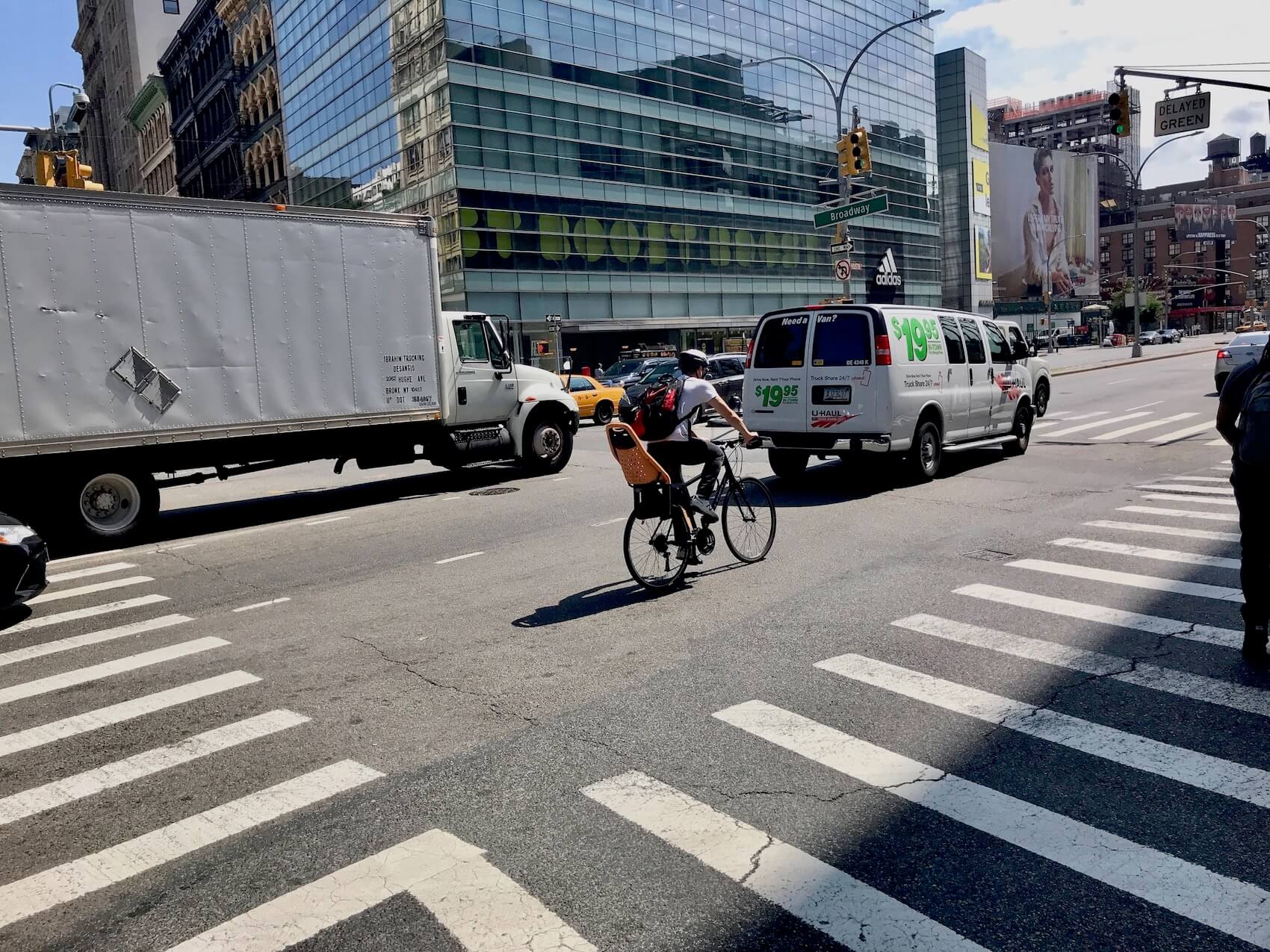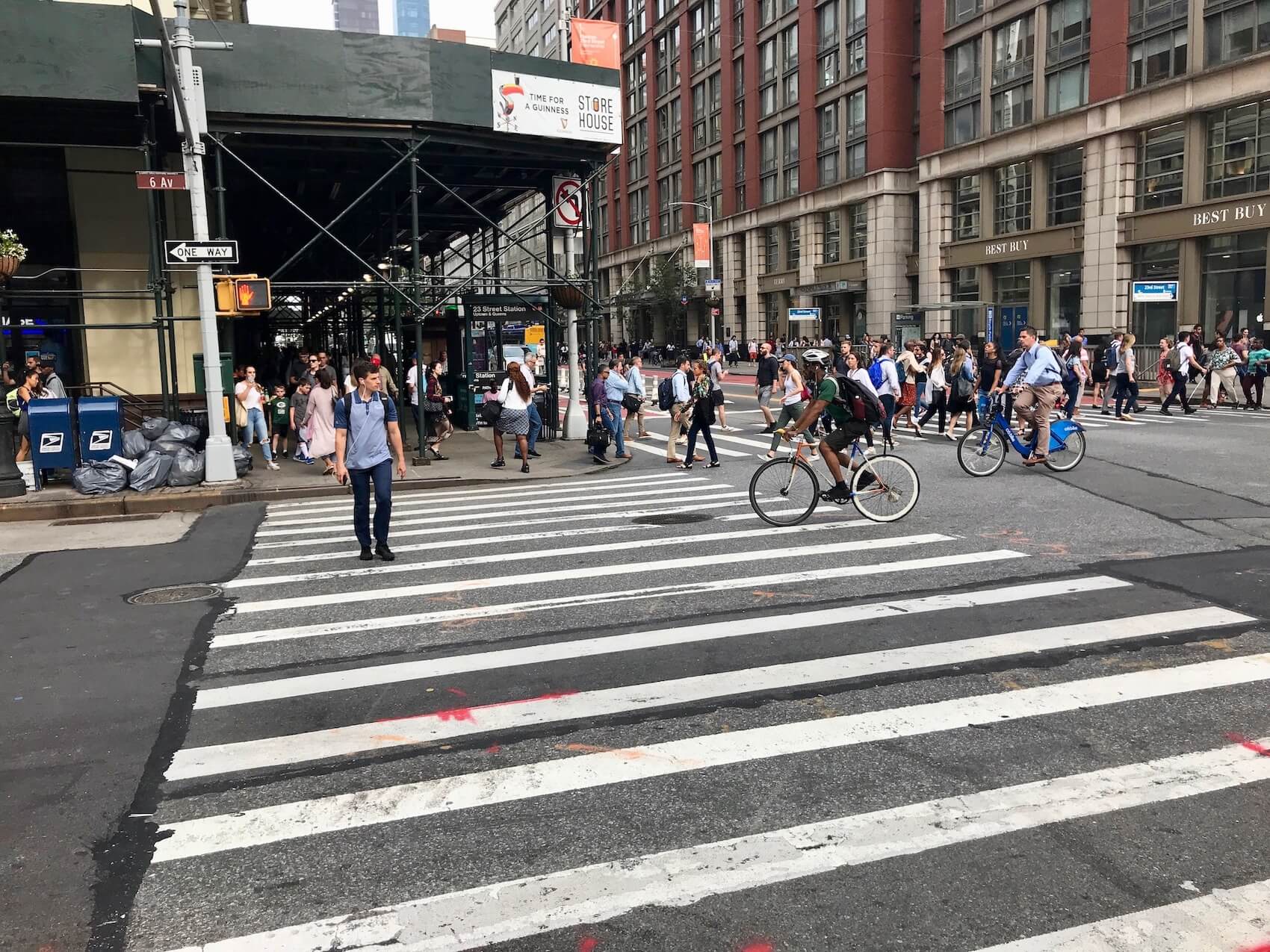
BY GABE HERMAN | As the grim tally of bicyclist deaths in the city this year continues to rise, city officials have been implementing and proposing new rules aimed at creating a better biking infrastructure.
There have been 18 cyclist deaths in the city so far in 2019, compared to 10 deaths in all of 2018. In response, Mayor de Blasio announced on July 25 a strategy called Green Wave: A Plan for Cycling in New York City.
The Green Wave plan has been allocated $58.4 million in city funding for the next five years. The initiative includes adding 30 miles of protected bike lanes every year. Fifty intersections will get “turn-calming treatments” to slow down drivers.
The plan also calls for police enforcement to increase at 100 of the most dangerous intersections, based on crash data, with a focus on risky actions, like speeding, failure to yield, blocking bike lanes and trucks that are oversized or off route.
There will be a continuation of Operation Bicycle Safe Passage, which was announced as a temporary action for early July and included many of the enforcement policies mentioned above. According to the city, in July’s first three weeks, police doubled enforcement against cars parked in bicycle lanes, issuing more than 8,600 summonses.
Police will also send supervisors to crash sites to investigate if right-of-way laws should be applied, and cyclists will no longer be ticketed at sites of fatal bike crashes.
The mayor’s plan also includes the Department of Transportation installing 2,000 bicycle parking spaces annually in the by using bike corrals. D.O.T. will also put out a request for expressions of interest, or R.F.E.I., to get ideas for a new high-capacity parking system for bikes.
The mayor also said there will be a focus on implementing a law recently passed by the City Council that lets cyclists ride on pedestrian signals and gives them a head start at thousands of intersections across the city.
In addition, de Blasio said he would work with Council Speaker Corey Johnson and councilmembers on other bills, including requiring a 3-foot passing distance between cars and bicycles.
“When we came into office, we promised New Yorkers we’d do everything we could to end traffic fatalities,” the mayor said at the plan’s announcement. “No loss of life on our streets is acceptable. With a dangerous surge in cyclist fatalities, we have to keep pushing the envelope and increasing our efforts. That’s what this plan is about. It’s a continuation of our promise. This time, specifically to bikers.”

Several local Manhattan politicians were supportive of the mayor’s new plan.
“I’m grateful to Mayor de Blasio for building on his commitment to Vision Zero with today’s investments,” said state Senator Brad Hoylman. “With bike ridership set to increase even more dramatically in the coming years, these new measures and protections could not come soon enough.”
“New Yorkers deserve safer streets,” said Borough President Gale Brewer. “The uptick in cyclist fatalities this year is unacceptable, and I’m glad the administration is taking steps to prevent future incidents.”
Councilmember Ydanis Rodriguez, whose 10th District includes Upper Manhattan, and who chairs the Council’s Transportation Committee, said even more must be done. While it’s good to add 30 miles of protected bike lanes every year, he said, “we should be aiming to have 100 miles of protected bike lanes a year.”
Speaker Johnson, whose West Side district includes Chelsea, the West Village and Hell’s Kitchen, introduced legislation in May requiring at least 50 miles of protected bike lanes to be added each year, along with at least 30 miles of new bus lanes each year that are separated from other traffic.
Meanwhile, a list has been compiled of the 10 most dangerous intersections in the city for bicyclists, with several of them in Lower Manhattan. The rankings are from localize.city, a real estate Web site, which used data from 2014 to 2018 on bicycle injuries and deaths.
The city’s most dangerous intersection, according to the list, is in Chelsea at Sixth Ave. and W. 23rd St., which was where bike messenger Robyn Hightman, 20, died in late June after being hit by a truck.
Third Ave. and E. 14th St. was found to be the city’s fourth-worst intersection for cyclists. Others in Lower Manhattan on the top-10 dangerous list for bikers included two spots on the Lower East Side, at Chrystie and Delancey Sts., and at Allen and E. Houston Sts.

















